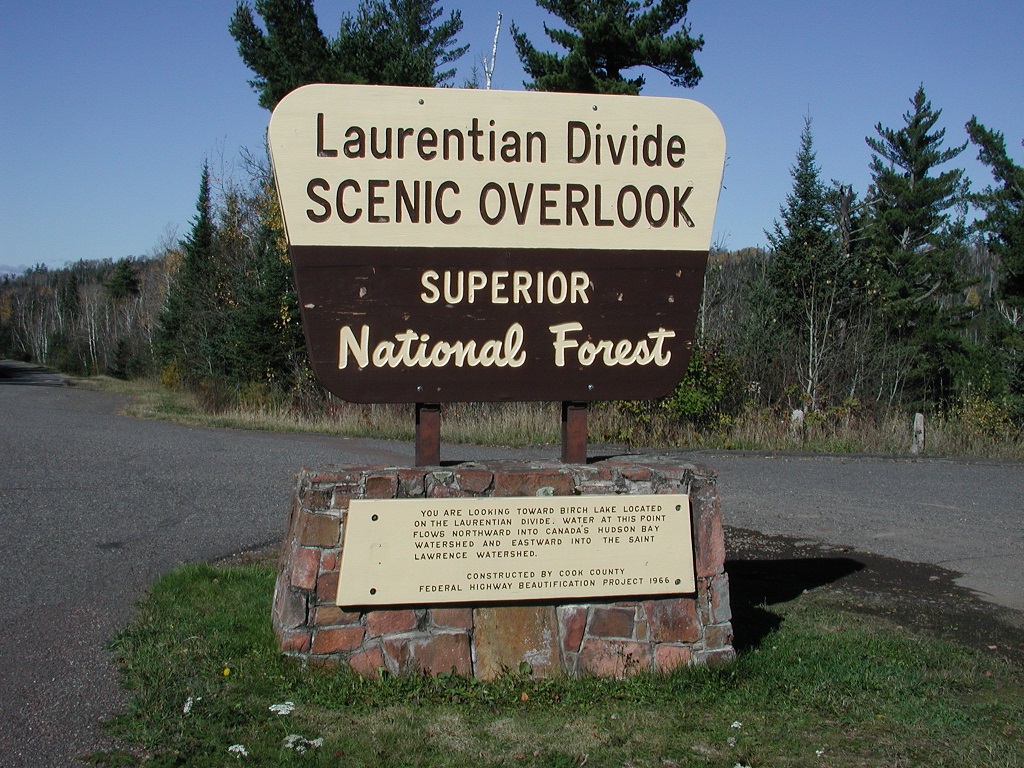* Twin Metals mineral leases comment period has closed
Tell the U.S. Forest Service and the Governor, protect Minnesota’s waters and forests:
Nix Twin Metals' Leases – and - Stop PolyMet's Land Swap
Consensus is building in Minnesota against sulfide mining and its potential disastrous impacts on Minnesota’s waters and environment. Metallic sulfide mining leaves behind significant and persistent pollution and environmental harm. According to Governor Dayton, this type of mining discharges “highly toxic sulfide waste”.
On June 13, 2016, the U.S. Forest Service announced a 30 day period for public input related to two proposed mining lease renewals, currently held by Twin Metals Minnesota (TMM). The Forest Service expressed a deep concern for the location of the leases within the watershed of the Boundary Waters Canoe Area Wilderness, and risks associated with potential copper-nickel sulfide mining. Potential impacts to water resources include changes in water quantity and quality, contamination from acid mine drainage and seepage of tailings water, tailings basin failures, and waste rock treatment locations. Based on these concerns, the Forest Service is considering withholding consent for lease renewal. (United States Dept. of Agriculture, Forest Service website)
On the coattails of political momentum expressing concern over metallic sulfide mining, the Forest Service is now considering the denial of the TMM leases. However, the pollution threats of sulfide mining are just as true for the proposed PolyMet copper-nickel mine as they are for Twin Metals. The only difference is that PolyMet, if permitted, will poison and degrade the Lake Superior watershed, with pollutants to seep into the Rainy River watershed (BWCAW) upon mine closure and thereafter.
Both PolyMet and Twin Metals would be located on Superior National Forests public lands. Mineral exploration is taking place throughout this most critical and legendary area of northeast Minnesota--the headwaters of the Rainy River watershed and the headwaters of Lake Superior, separated by the Laurentian Divide. This is the iconic Arrowhead region of the state--not part of the Iron Range. Copper-nickel mineralization is a separate geological formation that underlies the web of forests, wetlands, rivers, lakes, and streams that form the basic ecosystem of the mixed boreal forest.
The U.S. Forest Service has the simultaneous responsibility, while denying the Twin Metals leases, to also deny the more than 6,700 acre land exchange sought by PolyMet in order to locate its destructive open pit sulfide mine upon what is now protected Superior National Forest public land. The destruction of nearly 1,000 acres of high quality wetlands (and impairment of up to 8,264 acres of wetlands) to the mining process should be a red flag, pointing out how the water flow and quality of the Lake Superior headwaters will be permanently altered. The impacts of this immense physical loss of wetlands to wildlife and wildlife habitat are not known, nor do we understand the adverse effects upon the ecological functioning of the Lake Superior headwaters area. This would be the single largest permitted destruction of wetlands in the Great Lakes basin since the passage of the Clean Water Act over 45 years ago, and should not be allowed.

“Arrowhead Country” (Image: X-Comm)
-- The Poisoning Of Our Waters Is Simply Not Acceptable --
The Arrowhead region of Minnesota contains the triple watersheds, where waters flow north, east, and south, into the Rainy River, Lake Superior, and the Mississippi. The headwaters of this region are too valuable to put at risk from toxic sulfide mining schemes.
Environmental Injustice
The potential to pollute and poison the St. Louis River watershed is an issue of great tragedy. The largest human population in northeast Minnesota lives downstream of the proposed PolyMet mine. This includes the Fond-du-Lac Indian Reservation, as well as the cities of Cloquet and Duluth (and Superior, Wisconsin).
Pollution from existing taconite mines is already contaminating fish with mercury and degrading or destroying stands of wild rice, native food sources for Native Americans, as well as other locals and visitors. The addition of a toxic sulfide mining district in northeast Minnesota would be the second wave in the history of the state when Native American cultural resources would be destroyed by mining interests.
Protect Minnesota's Arrowhead Region from "highly toxic sulfide waste" - stop Twin Metals and PolyMet!
Contact for Minnesota Governor and the U.S. Forest Service:
Governor Mark Dayton
Telephone: 651-201-3400
Toll Free: 800-657-3717
Email: http://mn.gov/governor/contact-us/form/
Forest Service Chief Thomas Tidwell
Telephone: 202-205-8439
Email: ttidwell@fs.fed.us
The 30 day public input “listening session” for the Twin Metals leases is currently underway and runs through July 20th, 2016. (June 20, 2016 – July 20, 2016)
Input on the Twin Metals leases may be submitted the following three ways:
Via U.S. Mail to the Superior National Forest, ATT: Twin Metals Lease Input, 8901 Grand Ave Place, Duluth, MN 55808,
Emailed to TwinMetalsLeaseInput@fs.fed.us,
Verbally at a Public Listening session between 5:00 to 7:30 pm on July 13, 2016 at the Duluth Entertainment Convention Center (DECC)
AND between 5:00 p.m. to 7:30 p.m. on July 19, 2016 at the Ely Memorial High School in Ely, Minnesota.
More info on the leases and public meetings here:
http://www.fs.usda.gov/detail/superior/landmanagement/resourcemanagement/?cid=fseprd507250

Acid Mine Drainage (AMD) in a river - source USGS
What is sulfide mining?
Sulfide ores contain heavy metals (such as copper or nickel) that are bonded to sulfur, forming sulfide minerals.
When exposed to air and moisture, a chemical reaction generates sulfuric acid that can leach into the surrounding environment and cause the release of the metals into streams and lakes at levels that are toxic to fish and other aquatic life.
This phenomenon is known as Acid Mine Drainage (AMD).
Map showing the major Continental Divides of North America

From Wiki - By Pfly - Own work, CC BY-SA 3.0, https://commons.wikimedia.org/w/index.php?curid=12131177
 For more recent news, updates, events, alerts and happenings, please join us on Facebook
For more recent news, updates, events, alerts and happenings, please join us on Facebook


